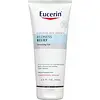What's inside
What's inside
 Key Ingredients
Key Ingredients

No key ingredients
 Benefits
Benefits

 Concerns
Concerns

 Ingredients Side-by-side
Ingredients Side-by-side

Water
Skin ConditioningLauryl Glucoside
CleansingCocamidopropyl Betaine
CleansingSodium Laureth Sulfate
CleansingAcrylates/C10-30 Alkyl Acrylate Crosspolymer
Emulsion StabilisingPEG-40 Hydrogenated Castor Oil
EmulsifyingTrideceth-9
EmulsifyingPhenoxyethanol
PreservativeMethylparaben
PreservativeEthylparaben
PreservativePropylparaben
PreservativeSodium Polyacrylate
AbsorbentSodium Hyaluronate
HumectantParfum
MaskingSodium Hydroxide
BufferingCitrus Japonica Fruit Extract
Skin Conditioning2-Bromo-2-Nitropropane-1,3-Diol
PreservativeCI 16255
Cosmetic ColorantWater, Lauryl Glucoside, Cocamidopropyl Betaine, Sodium Laureth Sulfate, Acrylates/C10-30 Alkyl Acrylate Crosspolymer, PEG-40 Hydrogenated Castor Oil, Trideceth-9, Phenoxyethanol, Methylparaben, Ethylparaben, Propylparaben, Sodium Polyacrylate, Sodium Hyaluronate, Parfum, Sodium Hydroxide, Citrus Japonica Fruit Extract, 2-Bromo-2-Nitropropane-1,3-Diol, CI 16255
Water
Skin ConditioningGlycerin
HumectantSodium Laureth Sulfate
CleansingCarbomer
Emulsion StabilisingPhenoxyethanol
PreservativePEG-40 Hydrogenated Castor Oil
EmulsifyingSodium Methyl Cocoyl Taurate
CleansingPEG-7 Glyceryl Cocoate
EmulsifyingDecyl Glucoside
CleansingGlycyrrhiza Inflata Root Extract
Skin ConditioningXanthan Gum
EmulsifyingSodium Hydroxide
BufferingMethylparaben
PreservativeButylparaben
MaskingEthylparaben
PreservativeIsobutylparaben
AntimicrobialPropylparaben
PreservativeBenzophenone-4
UV AbsorberWater, Glycerin, Sodium Laureth Sulfate, Carbomer, Phenoxyethanol, PEG-40 Hydrogenated Castor Oil, Sodium Methyl Cocoyl Taurate, PEG-7 Glyceryl Cocoate, Decyl Glucoside, Glycyrrhiza Inflata Root Extract, Xanthan Gum, Sodium Hydroxide, Methylparaben, Butylparaben, Ethylparaben, Isobutylparaben, Propylparaben, Benzophenone-4
Ingredients Explained
These ingredients are found in both products.
Ingredients higher up in an ingredient list are typically present in a larger amount.
Ethylparaben is a preservative, is a paraben, and is not reef safe.
Methylparaben is a preservative and is a paraben. It is used to prevent the growth of fungus, mold, and other harmful bacteria. Parabens are chemicals used as preservatives in both cosmetics and food.
Methylparaben can be synthetically created. It can also be found naturally in some fruits, such as blueberries.
Oftentimes, Methylparaben is combined with other parabens to help increase the shelf life.
The safety of Methylparaben is currently being studied. While ongoing studies are looking into the safety of parabens, the results have been very mixed. Some studies have not found Methylparaben to be harmful.
Learn more about MethylparabenPeg-40 Hydrogenated Castor Oil is derived from castor oil and polyethylene glycol (PEG). It is used as a emollient and emulsifier.
As an emulsifier, it helps prevent ingredients from separating. It also helps make the other ingredients more soluble; it is often used to solubilize fragrances. This increases spreadability and elongates shelf life in a product.
Emollients help soothe and soften the skin. They do this by creating a protective film on your skin. This barrier helps trap moisture and keeps your skin hydrated. Emollients may be effective at treating dry or itchy skin.
This ingredient may or may not be vegan, depending on the source.
Peg-40 Hydrogenated Castor Oil may not be fungal-acne safe. We recommend speaking with a professional if you have any questions or concerns.
Learn more about PEG-40 Hydrogenated Castor OilPhenoxyethanol is a preservative that has germicide, antimicrobial, and aromatic properties. Studies show that phenoxyethanol can prevent microbial growth. By itself, it has a scent that is similar to that of a rose.
It's often used in formulations along with Caprylyl Glycol to preserve the shelf life of products.
Propylparaben is a preservative and is a paraben with antifungal and antimicrobial properties.
This ingredient can be naturally found in plants and insects, but most of it is synthetically manufactured for human use. In cosmetics, it is usually created by reacting para-aminobenzoic acid and propanol (an alcohol).
You can usually find this ingredient in water-based products.
Parabens have come under controversy due to the claim they are hormone disruptors. Studies show conflicting results. We recommend speaking with a professional if you have any concerns.
Propylparaben is commonly found in food, medicine, and cosmetics.
Learn more about PropylparabenSodium Hydroxide is also known as lye or caustic soda. It is used to adjust the pH of products; many ingredients require a specific pH to be effective.
In small amounts, sodium hydroxide is considered safe to use. However, large amounts may cause chemical burns due to its high alkaline.
Your skin has a natural pH and acid mantle. This acid mantle helps prevent harmful bacteria from breaking through. The acid mantle also helps keep your skin hydrated.
"Alkaline" refers to a high pH level. A low pH level would be considered acidic.
Learn more about Sodium HydroxideSodium Laureth Sulfate (SLES) is a foaming, cleansing, and emulsifying ingredient. It is created from palm kernel oil or coconut oil. SLES is not the same as sodium lauryl sulfate. It is much milder and less likely to irritate.
SLES helps create foam in personal products. It also prevents ingredients from separating, helping to elongate the shelf life.
Sodium Laureth Sulfate is a type of sulfate. It can be drying. We recommend speaking with a professional about using this ingredient if you have concerns.
Learn more about Sodium Laureth SulfateWater. It's the most common cosmetic ingredient of all. You'll usually see it at the top of ingredient lists, meaning that it makes up the largest part of the product.
So why is it so popular? Water most often acts as a solvent - this means that it helps dissolve other ingredients into the formulation.
You'll also recognize water as that liquid we all need to stay alive. If you see this, drink a glass of water. Stay hydrated!
Learn more about Water